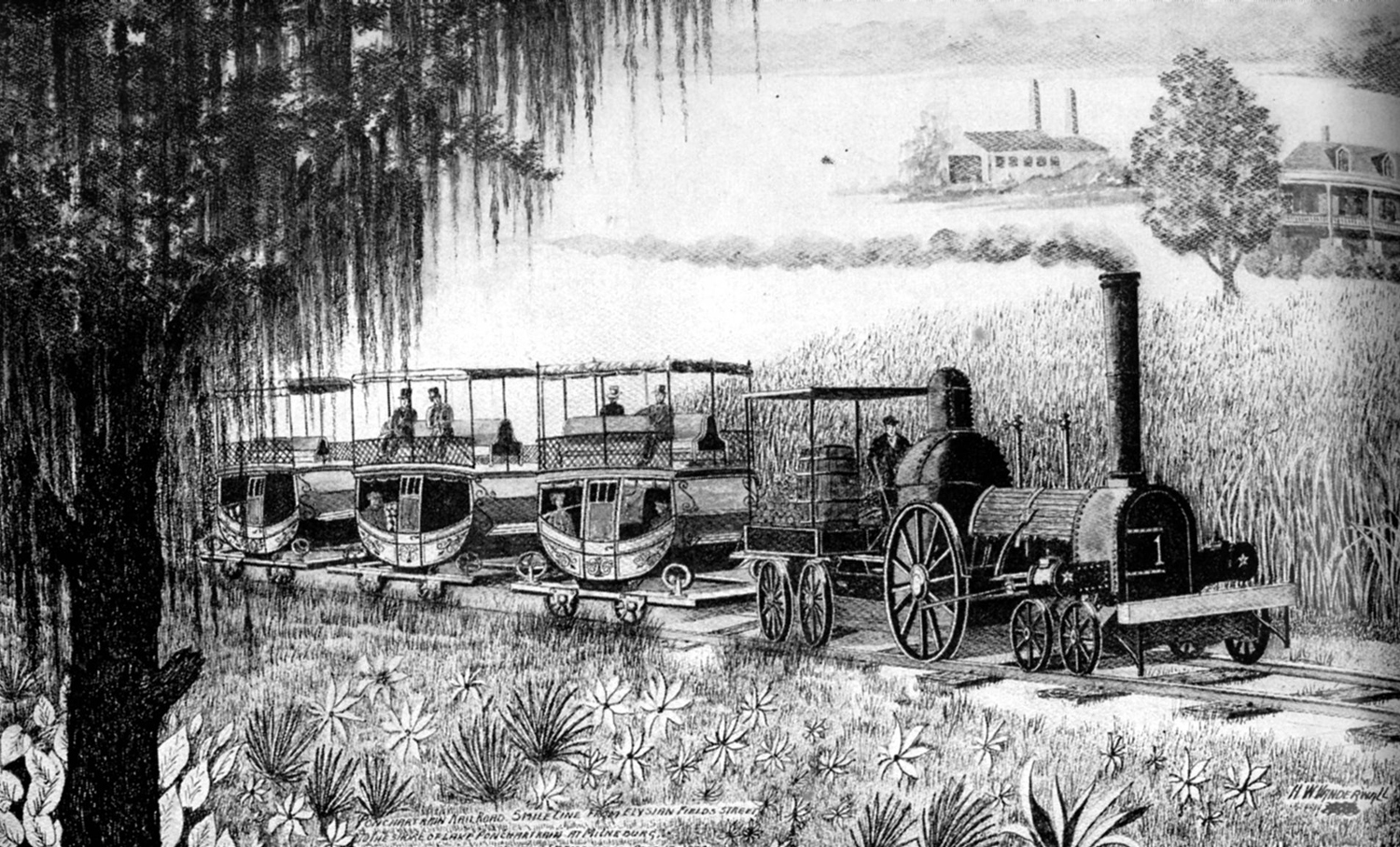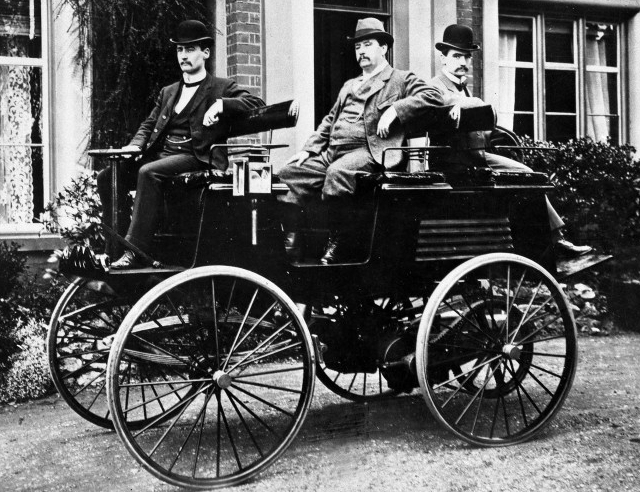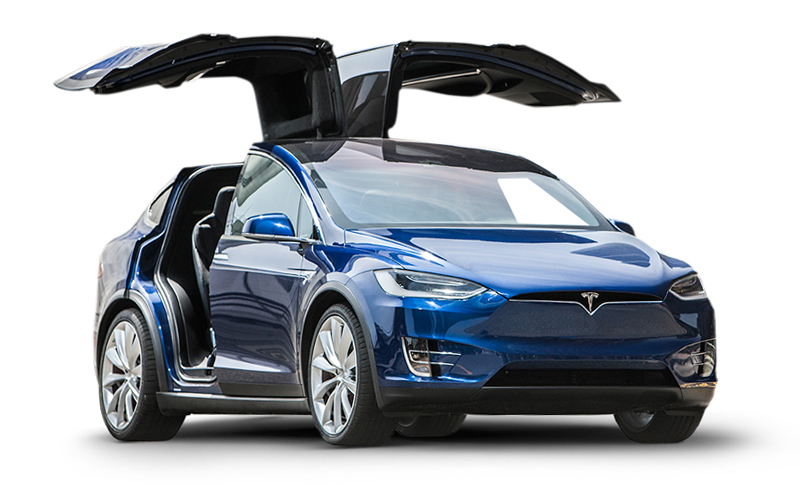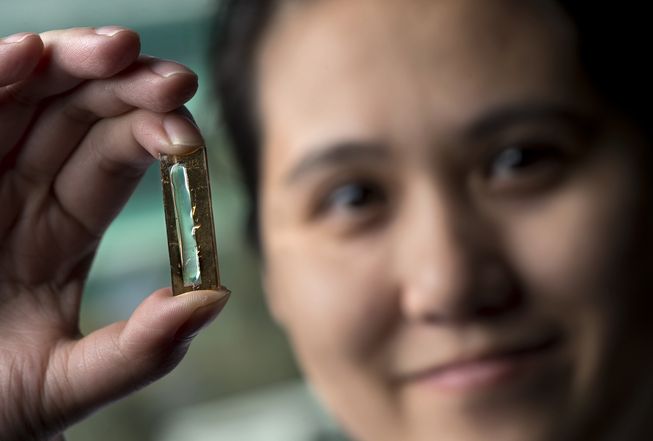Today’s Headlines read like a revolution; Chevy Bolt Wins North American Car of the Year, and, Toyota Concept-i Steals the Show CES 2017. These cars both feature electronic components, the Toyota more than the Chevy, but you get the idea. We’re fascinated with electronic powered cars like the idea were something new. It’s not.
Although the last century we shelved electricity in cars (quite literally, strapping the battery to a shelf so it could power the starter and a few precious minutes of radio if you were lucky), there was a time when electricity battled internal and external combustion for the pole position.
Guess who won?
Learn about the external combustion engine: The World’s Oldest Running Car Is Over 125 Years Old And Uses Zero Gasoline
Early 1800s

(source: american-rails.com)
Before henry Ford automated car manufacturing, people knew horseless carriages were the future. They just didn’t know which horse to back (too soon?) in the race to locomotion without a steed. Like all good capitalist races to the top, the answer came in the form of profit.
Gas cars went further and were cheaper to make. But let’s not get ahead of ourselves. That was 1908. In the 1830s, two men worked on the first car, coincidentally both in Scotland.
Some history books claim Robert Anderson made the first electric car, but there is little evidence to support this claim. We also know little about Anderson’s life. It was another man named Robert who gets credit for the first known electric car in 1837; Robert Davidson.
Davidson’s model weighed seven tons, but used no gas, so fuel efficiency was zero miles per gallon? None of these first cars were practical.
Late 1800s

(source: fitmycar.com)
Other inventors presented electric vehicles in the subsequent years, but it was in 1884, in Wolverhampton, England, that Thomas Parker built the first production electric car. He did so using what he’d learned engineering batteries to power dynamos, a type of generator.
Eventually, Parker went into business making dynamos for powering mines and industrial applications, even trams. Along with that business came the batteries and a few car prototypes. Parker built several prototypes, which proved difficult to track down for this researcher, but he dominated English car production for the 1890s.
Over in Germany, in 1888, Andreas Flocken invented another electric car, the Flocken Elektrowagen. Much of that car was wood, looking similar to horse-drawn carriages of the time. The electric motor of the Flocken powered the rear axle via a leather strap. It carried four passengers.
In 1890, in Des Moines, Iowa, William Morrison made a six-passenger wagon that went 14 miles per hour. We were a little late to the electric car game, a fact we made up for later.
The 1990s

(source: group.renault.com)
Other than a few projects, after the early 1910s, the e-car all but disappeared. In the 1950’s we produced some electric golf carts. In ’61, Henney Coachworks and the National Union Electric Company produced the Henry Kilowatt, an electric microcar that could do 60 MPH, lasting for an hour on one charge.
That was it until the 90s, when California blew some air into the idea. In the wake of the energy crises of the 70s and 80s, California’s Air Resources Board (CARB) pushed for more efficient cars. From that push, several electric vehicles went into production, none of which lasted.
The most famous story from that time was the GM EV1, a car buried in bizarre sub-plots, too many to cover in this piece. Chrysler, Ford, Honda and Toyota all produced EV versions of cars they already had, but none of them marketed those cars outside of California.
The last one of this wave, the RAV4-EV, Toyota pulled in 2002. By that time the Prius was on the road, a hybrid car with more to offer. We all know how that story went…
The 2000s Through Today

(source: caranddriver.com)
If the 90s showed how much we could foul the launch of something, the 2000s demonstrated how much we can make a comeback.
Tesla motors set the pace in 2004 with the announcement their electric roadster, a car they started selling in 2008. Despite some hiccups and a high price tag, Tesla defined the success with e-cars. Their latest model, the X, is even something the middle class can afford.
Before Tesla, Nissan produced the Leaf, the first all-electric car one could actually buy and drive around. Since then, Lotus, Mitsubishi, Nissan, Chevy, Toyota and even BMW (along with everybody else) is fighting for their slice of the pie.
Most cars on the road are still internal combustion. The distant second place goes to hybrids, but in time we may see the electric motor overtake hybrids.

(Battery you can recharge for 400 years | source: mnn.com)
The biggest hurdle continues to be batteries, of course. Despite how it may seem, we’ve not made too many strides in battery technology in the last hundred years. There have been some promising discoveries in the lab in recent history.
We may soon have flexible batteries and batteries we can recharge so many times we’ll die of old age four times over before those batteries are garbage. Still, weight is problematic for batteries. It’s not seven tons problematic, but it’s a challenge.
Just, don’t let anyone tell you the e-car is something new.
